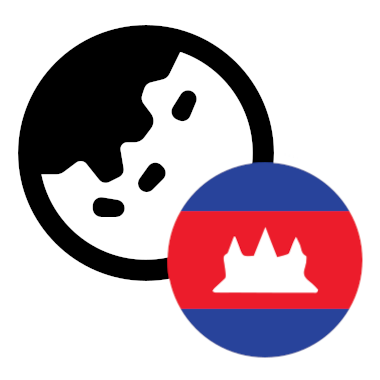Before I ever explored the world of fashion in more depth, I had no idea Cambodia even had a garment industry. But then I started wondering: could Cambodia’s textiles be a secret weapon in the fashion world? Is there a thriving industry there, or is it all sunshine and sandals? And what about the downsides? What kind of challenges do these Cambodian fashion folks face?
If you’ve ever asked yourself these questions, then this article is your lucky charm. We’ll be taking a deep dive into Cambodia’s textile industry, uncovering the good, the bad, and the seriously sustainable.
💡 We’re your Cambodia sourcing agent, connecting international businesses with Cambodian suppliers who are both reliable and ethical. We have a network of manufacturers, wholesalers, and distributors across all sorts of product categories.
🎯 Basically, if you can dream it, we can source it in Cambodia! Just tell us what you’re looking for (product specs, minimum order quantity, any special sourcing goals) and our local team will get to work finding the perfect Cambodian match for you – all within a week!
Sourcing Textile from Cambodia and Sustainability Matters ?
Cambodia, a Southeast Asian nation, is bordered by Vietnam to the east, Laos to the north, Thailand to the northwest, and the Gulf of Thailand to the southwest.
Cambodia has seen impressive economic and urban development for over 20 years. Fueled by a young and growing population with a rising middle class, the country’s GDP has climbed at an average rate of 7% annually between 2010 and 2019. The Cambodian government has embraced free market principles, welcoming foreign investment with open arms. Examples include Qualified Investment Projects (QIPs) that offer tax breaks to attract investors.

Cambodia’s strategic location at the intersection of major trading partners further strengthens its economic prospects. Recent free trade agreements, like the China-Cambodia FTA and the Regional Comprehensive Economic Partnership, are expected to connect Cambodia even more deeply with international markets. International trade is already flourishing, with garment and footwear exports to major international suppliers experiencing a 17% surge between 2018 and 2019. This trend is likely to continue as both exports and imports keep rising.
Cambodia’s booming garment industry may be a source of national pride, but concerns about its environmental impact are growing louder. Can this economic powerhouse become more sustainable? Let’s take a closer look at the challenges and see if a greener future for Cambodian fashion is possible.
Sustainable Textiles Trends
Cambodia’s garment industry is a double-edged sword. On one hand, it’s been the engine of the country’s economic growth, employing hundreds of thousands and lifting many out of poverty. Major brands have flocked to Cambodia for its cheap labor, but this boom has come at a heavy cost. The industry is a major polluter, with factories disregarding environmental regulations and dumping toxic waste. This environmental damage, coupled with Cambodia’s political situation, led the EU to partially withdraw trade privileges.

The garment sector is at a crossroads. As global consumers demand more sustainable practices, major brands are moving away from suppliers who don’t comply with environmental standards. This shift threatens to shutter factories and leave many jobless. The future of Cambodia’s garment industry lies in embracing sustainability. Upcycling and a circular economy model could be the answer. These approaches would not only lessen the environmental impact but also ensure the industry’s long-term viability.
Silk
Cambodia boasts a rich history deeply intertwined with textiles. Silk production stretches back centuries, with intricate weaving techniques passed down through generations. Archaeological evidence suggests silk farming existed as early as the 13th century. During the French colonial period, the late 19th and early 20th centuries, sericulture (silk production) flourished, with large plantations dedicated to mulberry tree cultivation, the primary food source for silkworms. However, the devastating Khmer Rouge regime in the late 20th century nearly decimated this tradition. Local silkworm production virtually ceased, and knowledge transmission was severely disrupted.
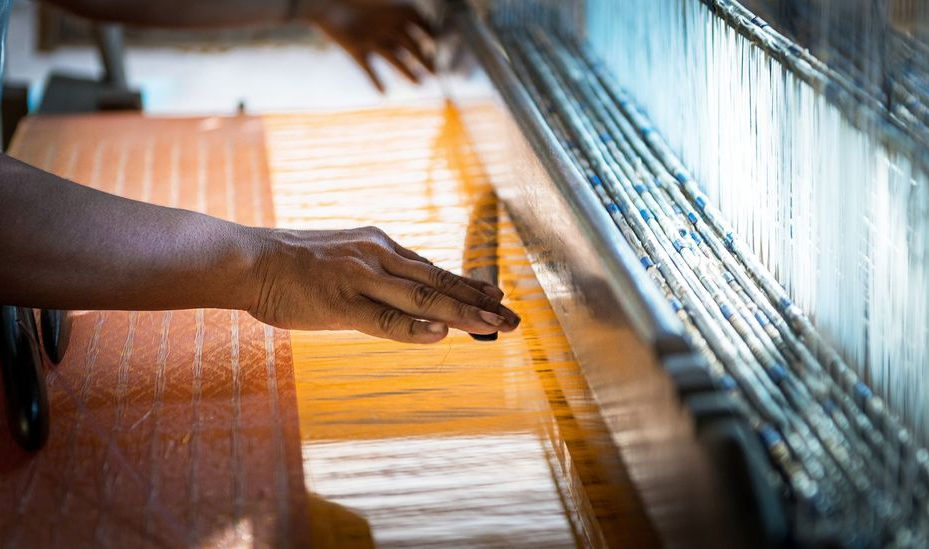
Despite these challenges, a revival is underway. Today, small-scale silk producers, often women in rural areas, continue to craft exquisite silk garments and accessories using traditional methods. Interestingly, most of the raw silk used today is imported, highlighting the ongoing challenge of rebuilding Cambodia’s domestic silk industry.
In Cambodian culture, silk weaving is not just a craft, but an art form deeply intertwined with spirituality. Traditionally, intricate patterns on silk garments were believed to hold protective powers and ward off evil spirits.
Certain colors and motifs were associated with specific ceremonies or social status. For example, purple silk was reserved for royalty while gold symbolized prosperity.
Cotton
Unlike Cambodia’s silk industry, domestic cotton production remains small-scale. Most of the raw cotton is imported, limiting large-scale production. However, Cambodian cotton producers are making a positive impact.
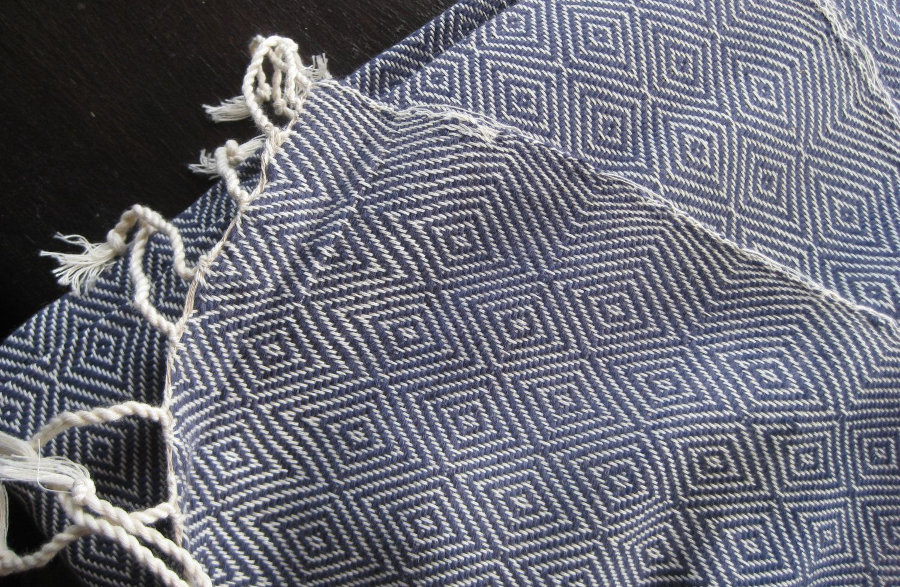
Many embrace ethical practices and sustainability. Some businesses even focus on social good, like employing disabled Cambodians and converting former minefields into cotton farms. These producers create handmade cotton goods like scarves and pajamas, often incorporating recycled materials. Their efforts highlight the potential for a more sustainable and socially responsible cotton industry in Cambodia.
Cambodia’s Textile Industry
The garment industry is Cambodia’s economic powerhouse. With low labor costs and a skilled workforce, the country has become a magnet for international brands like Levi’s, H&M, and Adidas. However, this rapid growth has come at an environmental cost. Concerns abound regarding pollution from factories, the use of toxic chemicals in dyeing and finishing processes, and the improper disposal of textile waste. Additionally, working conditions in some factories raise ethical concerns, highlighting the need for stronger labor regulations and worker safety protocols.

There is a positive sign that Cambodia is seeing a growing trend of innovative textile recycling projects. One such initiative uses discarded plastic bottles to create recycled polyester yarn, which is then woven into new textiles. This not only reduces waste but also creates a unique, sustainable material.
Despite overflowing landfills and environmental damage caused by discarded fabric scraps (deadstock), Cambodia has a golden opportunity to embrace a more sustainable future. By adopting a circular economy model, the textile industry could generate significant economic growth and create new jobs. International initiatives like Reverse Resources are here to promote upcycling, and Cambodian businesses like Good Krama and Nomi are already putting these practices into action. These businesses are transforming textile waste into new products, empowering local communities in the process.
Cambodian Fair-Trade Fashion
Cambodia boasts a growing fair-trade fashion industry that prioritizes ethical practices, sustainability, and social impact. These brands empower Cambodian artisans, especially women, by providing fair wages, training, and childcare support. Morijana, for example, works closely with Cambodian women throughout the design and production process, offering not just fashion but also skills development and health education.
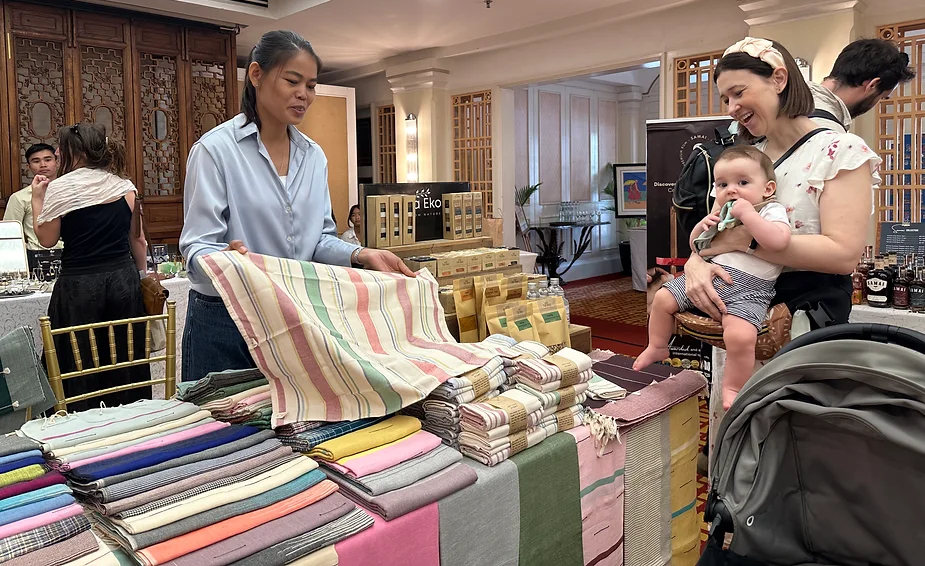
Consumers looking to support ethical and sustainable fashion can turn to platforms like CULT (Cambodia’s Ultimate Lifestyle Trade), a platform bringing together ethical and responsible Cambodian brands, which promotes Cambodian brands that celebrate traditional craftsmanship and heritage while adhering to fair-trade principles. By choosing Cambodian fair-trade fashion, consumers can contribute to a more sustainable and equitable fashion industry.
Challenges and Opportunities
The current model of fast fashion, characterized by high production volume and low prices, is inherently unsustainable. Consumers are increasingly demanding eco-friendly practices and ethically sourced materials. This shift presents both challenges and opportunities for Cambodia’s textile industry.
- Economic Engine: The textile and clothing industry is the lifeblood of Cambodia’s economy. Here’s the proof:
Over 600,000 employed: A 2021 report by DHL Express KH states that the industry directly employs over 800,000 Cambodians [Source: Cambodia’s Textile & Apparel Industry – DHL Express KH]. This translates to a significant portion of the workforce, highlighting its crucial role.
Largest manufacturing sector: According to a 2018 report on Knitting Industry, the garment industry is Cambodia’s undisputed leader in manufacturing, surpassing all other sectors [Source: Prospects for the textile and clothing industry in Cambodia, 2018]. - Export Powerhouse: Cambodia’s textile sector reigns supreme when it comes to generating foreign currency. Let’s see the numbers:
Half of total exports: Data from research published on MPRA (Munich Personal RePEc Archive) shows that clothing exports contribute a whopping 40% of Cambodia’s GDP [Source: Cambodian place in the International trade of Textile and Clothing: Threat and Opportunity]. - Global Access: Cambodia holds a golden ticket to international markets:
Duty-free, quota-free access: Cambodia’s status as a least developed country (LDC) grants it a significant advantage. They enjoy duty-free and quota-free access to major markets worldwide, as highlighted in a report by DHL Express KH [Source: Cambodia’s Textile & Apparel Industry – DHL Express KH]. This eliminates trade barriers and makes Cambodian exports highly competitive. - Competitive Labor: The industry thrives due to a readily available and cost-effective workforce:
Attracting FDI: A report by FASH455 Global Apparel & Textile Trade and Sourcing showcases that Cambodia’s Foreign Direct Investment (FDI) in the garment industry reached a staggering USD 248 million in 2016 [Source: Garment Industry in Cambodia – FASH455 Global Apparel & Textile Trade and Sourcing]. This surge in FDI is directly linked to the competitive labor force. - Government Backing: The Cambodian government actively champions the industry’s growth:
Policies for FDI and development: Numerous resources point to the Cambodian government’s commitment to the sector. Reports like “Prospects for the textile and clothing industry in Cambodia, 2018” mention specific policies designed to attract FDI and promote the industry’s development [Source: Prospects for the textile and clothing industry in Cambodia, 2018]. This active support fosters a favorable environment for textile and clothing businesses.
Disadvantages of Manufacturing in Cambodia
- Import Dependence: A major vulnerability lies in the industry’s almost 1. Import Dependence:
- Problem: The industry relies on importing X% of its textiles (e.g., cotton, yarn, fabric). This can be due to a lack of domestic production capacity for certain materials or a price advantage offered by foreign suppliers.
- Impact: Disruptions in global supply chains or fluctuations in foreign currency exchange rates can significantly impact production costs and profitability.
- Limited Value Creation:
- Problem: The sector focuses on cut, make, and trim (CMT) operations, which involve assembling pre-made fabric pieces into garments. This offers a lower profit margin compared to activities like spinning yarn or weaving fabric.
- Impact: The industry captures a smaller share of the overall garment value chain, limiting its growth potential.
- Cost and Productivity Issues:
- Problem: High energy costs for powering machinery and low worker productivity due to outdated equipment or lack of training can make the industry less competitive.
- Impact: Production costs become higher compared to regions with cheaper energy or more efficient practices. This can lead to job losses if companies struggle to compete on price.
- Modernization Need:
- Specific Needs: Upgrading to more energy-efficient machinery, diversifying raw material sourcing to reduce reliance on a single source, and investing in skills development programs to improve worker productivity.
- Benefits: Reduced production costs, a more adaptable supply chain, and a higher quality workforce can all lead to increased competitiveness.
- Sustainability and Ethics:
- Consumer Trends: Growing demand for clothing produced with sustainable practices (e.g., organic cotton, recycled materials) and ethical labor standards (e.g., fair wages, safe working conditions).
- Industry Response: The industry needs to adopt these practices to maintain consumer interest and brand reputation.
The good news is that the Cambodian government is aware of these challenges and has plans in place to address them. They want to make the textile industry more competitive and sustainable in the long run.
Government and Industry Initiatives
The Cambodian government and industry leaders are taking steps towards sustainable sourcing. The National Silk Strategy aims to revitalize the domestic silk industry, promoting local silkworm production and traditional weaving techniques. Initiatives are underway to promote organic cotton production and implement responsible waste management practices. Additionally, the Garment Manufacturers Association in Cambodia (GMAC) works to promote ethical labor standards and environmental responsibility among its members.
The Role of International Collaboration
International brands and development organizations have a crucial role to play in supporting Cambodia’s transition to a more sustainable textile industry. Brands can incentivize sustainable practices by offering higher prices for ethically sourced and eco-friendly textiles. This not only benefits the environment and workers but can also enhance brand reputation and consumer loyalty.
Development organizations can provide training and financial assistance to Cambodian producers to improve their sustainability practices. This could involve helping farmers adopt organic cotton cultivation methods, training factory workers on safe and eco-friendly dyeing techniques
Cambodian Garment Industry in 2022-2023
Last year was a tough one for Cambodia’s clothing industry. They took a big hit, making nearly 13% less money selling clothes overseas compared to 2022. Instead of the usual $9 billion or so, they only brought in around $7.9 billion in 2023. Ouch! Folks are saying this slump happened because of big problems around the world that messed up international trade. This meant people in countries like the US, Canada, and Europe weren’t buying as many Cambodian clothes as usual.
Here’s some good news though! There were signs things might be picking up again in the last few months of 2023. In December, for example, Cambodia actually sold more clothes than they did in December of 2022! So, maybe things are starting to look up?
Why the Drop in Sales?
Experts say the main reason for the clothing slump was because people in other countries just weren’t buying as many clothes in general. It wasn’t that Cambodia wasn’t making enough clothes, but because people in other countries were facing their own economic troubles. When money’s tight, new clothes are often the first thing to go. On top of that, some countries were fighting with each other, which hurt the global economy and made it harder for Cambodia to sell its clothes. Not ideal.
A Chance to Bounce Back
Even though 2023 wasn’t a great year for Cambodian clothes exports, there’s reason to be hopeful. The end-of-year uptick suggests the industry might be on the road to recovery. Here’s an idea: Maybe Cambodia could try making even better quality clothes, or perhaps sell their clothes to new countries. They could even brainstorm new clothing styles that people will love! By being creative and flexible, Cambodia’s clothing industry can bounce back from this challenge and come out even stronger.
Lessons Learned
The whole situation with Cambodia’s clothes exports shows us just how connected the world really is. When something bad happens in one country, it can ripple through and hurt other countries too. This is especially true for developing countries like Cambodia, which rely heavily on selling things to other countries to make money.
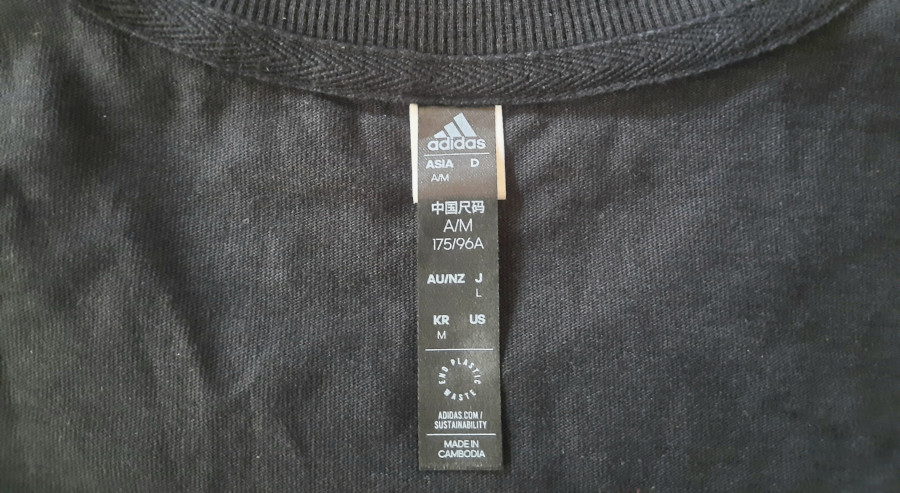
The good news is that Cambodia can learn from this. By finding new ways to sell their clothes and making their economy less reliant on outside forces, Cambodia can become more prepared for whatever challenges come their way in the future. Here’s to a brighter future for Cambodian clothes!
Important Facts to Remember:
Cambodia’s clothing exports dropped nearly 13% in 2023.
Revenue went from $9.03 billion in 2022 to $7.9 billion in 2023.
There were signs of recovery in late 2023.
The textile and apparel sector employs roughly 760,000 Cambodians across 1,077 factories (as of early August 2023).
The US, EU, Japan, Canada, and the UK are some of the main countries that buy Cambodian clothes.
Giz-Cambodia: Your Sourcing Partner in Southeast Asia
With our office conveniently located in Ho Chi Minh City, Vietnam, Giz-Cambodia is well-positioned to support your sourcing needs across Southeast Asia, including Cambodia. We offer a comprehensive range of services to streamline your sourcing journey, ensuring you find high-quality textiles produced with ethical and sustainable practices.
Our experienced sourcing team acts as your trusted buying office in the region. We provide A-Z procurement services, from identifying the right Cambodian suppliers who prioritize sustainability to conducting thorough due diligence checks. Our team also assists with quality control throughout the production process, ensuring your products meet your exact specifications.
